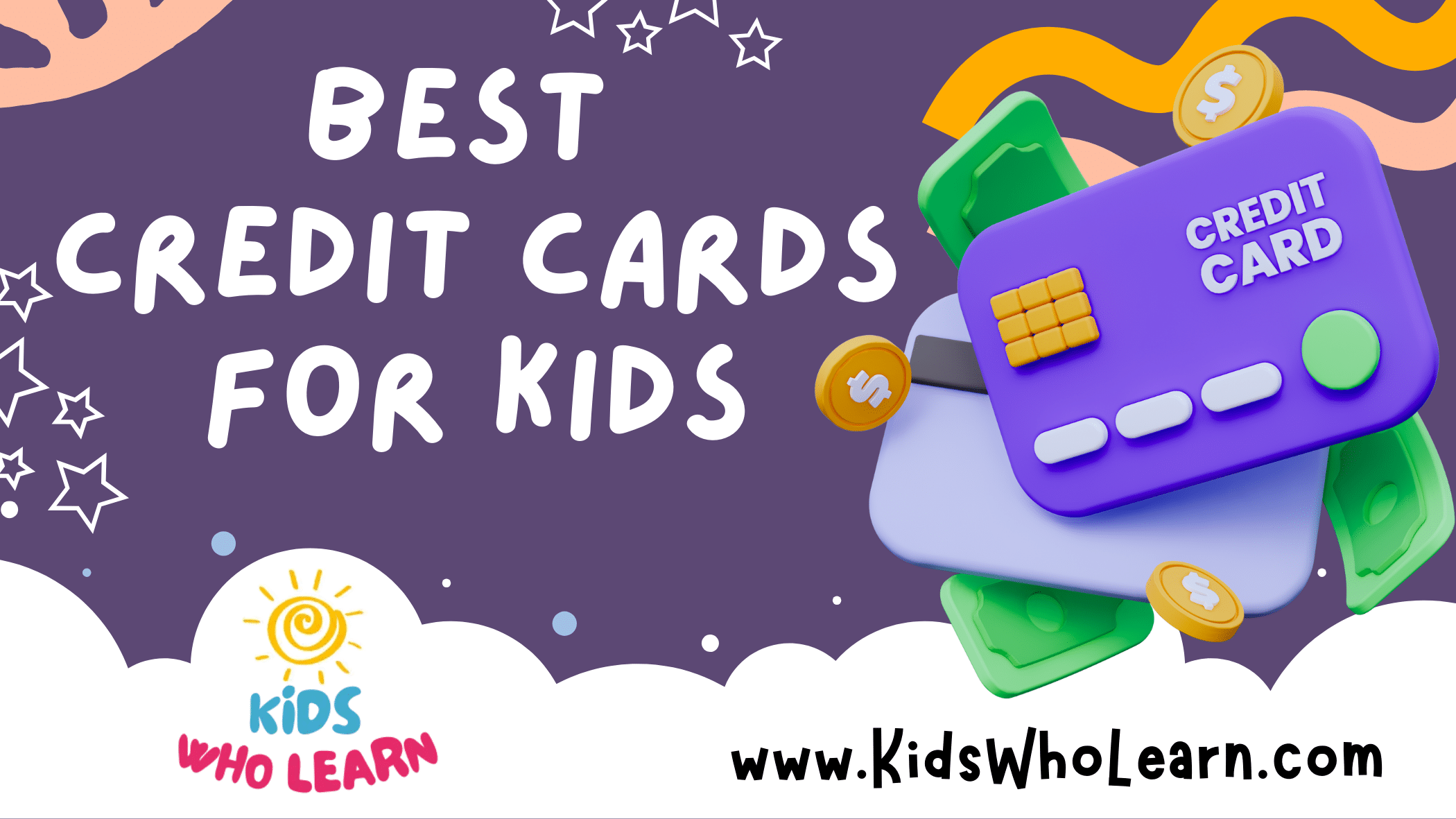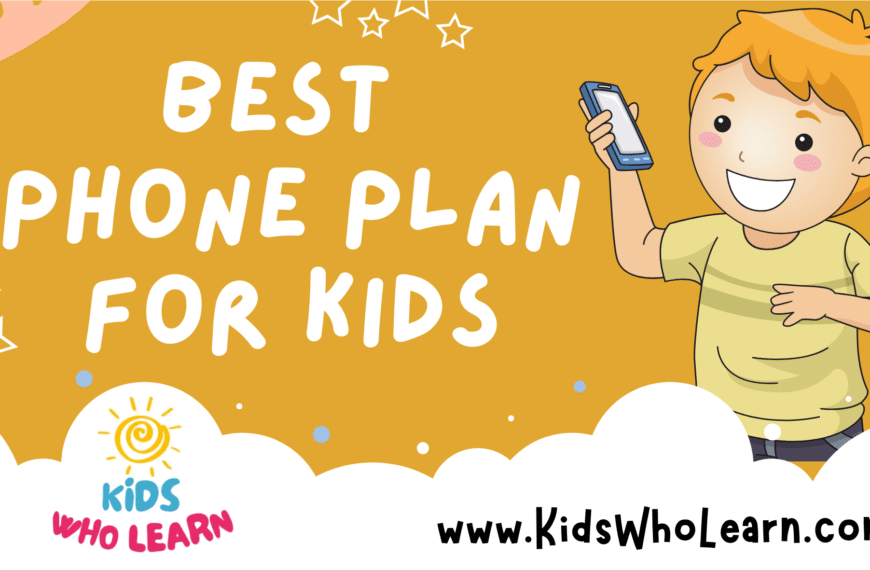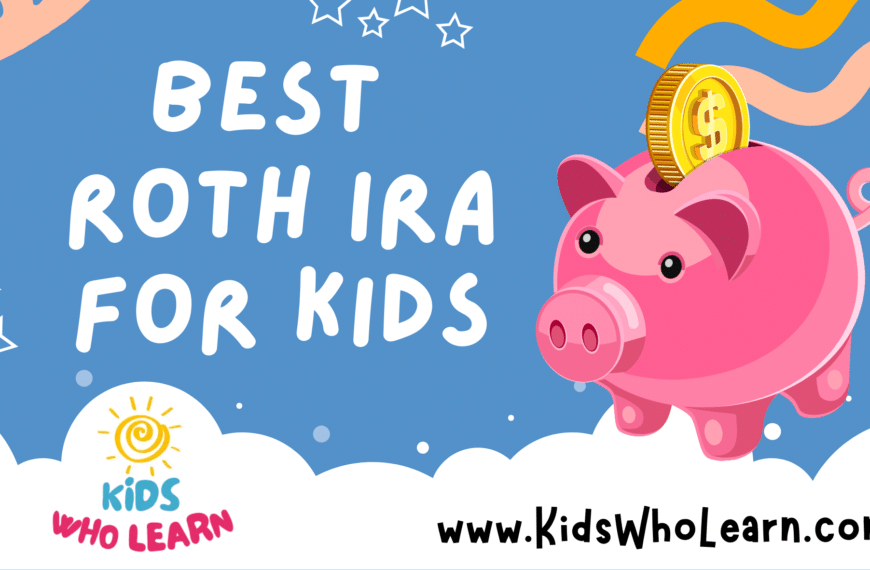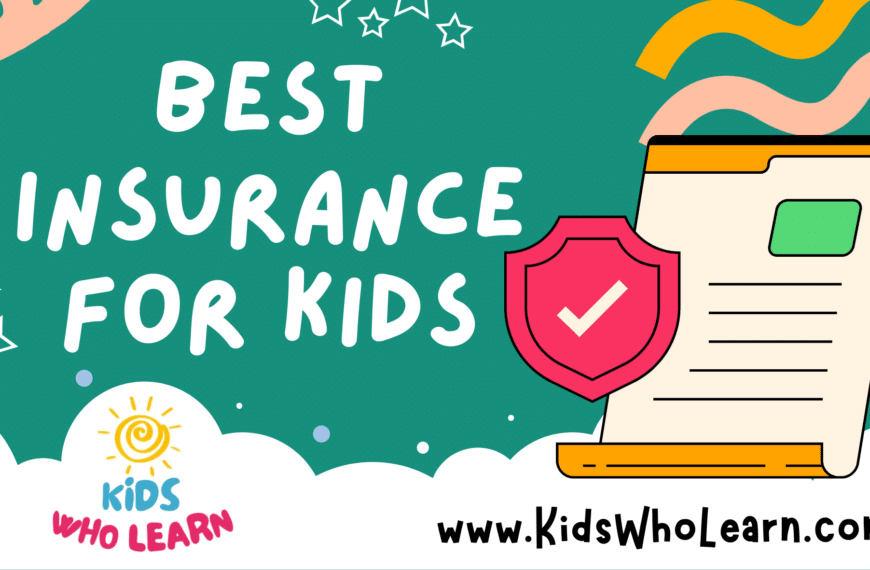Introducing children to the concept of credit can be a pivotal step in teaching financial responsibility and literacy. Credit cards designed for kids are becoming more prevalent as tools to help parents guide their children towards smart money management. These cards often come with features that allow customization of spending limits, monitoring of transactions, and the ability to block certain merchant categories, ensuring a controlled and educational experience.
Selecting the right credit card for your child may seem daunting, but it is an essential part of their financial education. The ideal card should align with the child’s maturity level and spending habits while offering the chance to learn about credit scores and interest rates. It also provides a practical way to handle money in an increasingly digital economy, setting them on the path to fiscal adulthood. Such cards can come with educational resources, rewards for good spending behavior, and tools for parents to track usage and set boundaries.
When introducing a credit card to your child, it’s essential to emphasize the importance of responsible use. Explain how credit works, the consequences of overspending, and the long-term benefits of building a good credit history. It’s equally crucial to discuss the potential risks, like fraud or impulse buying, and how to mitigate them. By engaging with these financial tools, kids can develop a sense of autonomy and confidence in handling their personal finances.
Key Takeaways
- Credit cards for kids promote financial literacy and responsible money management.
- Choosing the right card involves matching features with the child’s financial understanding and needs.
- Educating children on responsible credit use is key to fostering long-term fiscal responsibility.
Understanding Credit For Kids
Teaching children about credit early prepares them for financial independence. Understanding how credit cards work is crucial for managing finances and building a solid credit foundation.
Importance of Financial Literacy
Financial literacy is essential for making informed money decisions. Your credit score is a numerical representation of your creditworthiness, and it impacts your ability to borrow money and the conditions of the borrowing. Introducing concepts such as credit history and effective financial management can lead to responsible credit card use and a strong credit profile.
- Credit Score: It measures lending risk, affecting loan approvals and interest rates.
- Credit History: A record of how consistently you repay debts.
Basics of Credit Cards
Credit cards are tools for building credit when used responsibly. As an authorized user, you can start creating your own credit history without the responsibility of managing an account independently. It’s a safe stepping stone towards your own credit card.
- Authorized User: Being added to someone else’s credit card, contributing to your credit score.
- Building Credit: Timely payments and good credit habits establish a positive credit history.
Understanding these aspects can lead to better financial decisions and set a foundation for your future economic well-being.
Choosing the Right Card
Selecting the right credit card for your child is a critical financial step. It’s essential to understand the differences between card types and the features that each one offers to ensure a fit for your child’s needs and financial learning.
Secured vs. Unsecured Cards
When considering a credit card for your child, you have the choice between a secured and an unsecured card. A secured card requires a deposit that typically sets the credit limit. For example, a $300 deposit would often grant a $300 credit limit. This is a safeguard and can help instill responsible spending habits. On the other hand, an unsecured card does not require a security deposit and is granted based on your child’s creditworthiness.
| Feature | Secured Card | Unsecured Card |
|---|---|---|
| Deposit Required | Yes | No |
| Credit Limit | Usually equal to deposit | Based on creditworthiness |
| Helps Build Credit | Yes | Yes |
| Accessibility for Kids | High | Low |
Prepaid Debit Cards vs. Credit Cards
You might also consider whether a prepaid debit card or a credit card is more suitable. Prepaid debit cards allow you to load a set amount of money onto the card, controlling spending and eliminating the risk of debt. They do not have a balance transfer option or an intro APR since they are not credit products. Credit cards, on the other hand, provide an intro APR offer which can be beneficial for larger purchases that will be paid off over time, and they may come with rewards.
| Card Type | Credit Building | Spending Control | Potential Fees |
|---|---|---|---|
| Prepaid Debit Card | No | High | Varies (often no annual fee) |
| Credit Card | Yes | Moderate (limited by credit limit) | Often includes annual fee |
Evaluating Card Features
When evaluating card features, look for a card with no annual fee to minimize costs. A card with a low or intro APR can be advantageous if unexpected expenses make full monthly payment challenging. Furthermore, consider a card that offers rewards for purchases that align with your child’s spending patterns. Lastly, a card that allows balance transfers might be useful in consolidating debts or moving to a card with better terms once your child’s financial responsibility has been established.
- No Annual Fee: Cost-saving and budget-friendly.
- Intro APR: Low or no interest for an initial period; ideal for larger necessary purchases.
- Rewards: Points, cash back, or other incentives for purchases.
- Balance Transfers: Option to transfer existing debts from one card to another, typically to save on interest.
By carefully considering these factors, you can find a credit card that not only serves as a financial tool for your child but also aids in developing sound money management skills.
Teaching Responsible Credit Use
Encouraging responsible credit habits early on sets the foundation for a lifetime of financial literacy. Understanding credit utilization and setting clear spending limits are key steps in managing a credit card effectively.
Setting Spending Limits
Spending limits are crucial to maintaining a balanced budget. As you introduce your child to credit cards, decide on a spending limit together. This limit should reflect their ability to pay off the balance each month and align with their financial responsibilities.
- Monthly Limit: Set a specific dollar amount that cannot be exceeded each month to prevent overspending.
- Large Purchases: Define what constitutes a large purchase and require approval before these types of transactions are made.
Monitoring Credit Utilization
Credit utilization refers to the amount of available credit being used at any given time. It is typically expressed as a ratio called the credit utilization ratio.
- Ideal Ratio: Aim to keep the credit utilization ratio below 30% to positively influence credit scores.
- Balance Alerts: Set up alerts to notify both you and your child when the balance approaches the pre-set spending limit.
- Regular Review: Schedule monthly reviews of the credit card statement with your child to discuss usage and reinforce the importance of keeping the balance in check.
Maximizing Benefits
When choosing a credit card for kids, it’s crucial to aim for one that offers maximum benefits with minimal costs. Your focus should be on finding cards with rewarding incentives and understanding the fee structure to avoid unnecessary charges.
Rewards and Incentives
Cash Back: Look for cards that offer cash back on purchases, which is essentially a rebate on the spending you do. This can be in the form of a flat rate on all purchases or vary with different bonus categories.
- Bonus Categories: Some cards feature higher cash back percentages in specific categories such as groceries or entertainment. It’s beneficial to align these categories with your child’s spending habits.
- Robust Rewards Program: A card associated with a Visa network might offer a more robust rewards program, including points that can be redeemed for travel, merchandise, or gift cards.
- **Visa Cards**: Often have widespread acceptance and good reward programs.
Understanding Fees
Annual Fee: Be on the lookout for cards that do not charge an annual fee. This helps in keeping the costs down while still reaping rewards.
- Foreign Transaction Fee: If your child will use the card internationally, consider cards that waive the foreign transaction fee to save on costs during travel.
| Fee Type | What You Need to Know |
|----------------------|-------------------------------------------------------|
| Annual Fee | Aim for cards with no annual fee to reduce costs. |
| Foreign Transaction Fee | Select cards that do not charge this fee for savings on international purchases. |
By understanding these aspects, you can select a credit card for your child that not only teaches financial responsibility but also provides valuable rewards and incentives.
Kid-Friendly Credit Card Options
When selecting a credit card for your child, look for options that offer educational resources or help them build credit in a secure manner.
Cards Offering Educational Resources
Greenlight offers a credit card specifically designed for kids, with features geared towards financial education. These features include parental controls, real-time transaction notifications, and spending limits to cultivate financial responsibility. The card pairs with an educational app that helps kids learn budgeting skills and money management.
Secured Cards for Building Credit
For older children ready to build their credit profile, starting with a secured credit card such as the Capital One Platinum Credit Card might be a sound choice. This card requires a refundable security deposit, which becomes the credit line. It helps in safely building credit, as the spending limit is capped by the deposit made into a linked savings account.
Secured student credit cards should also be considered. Cards like Chase Freedom Flex℠ and Chase Freedom Unlimited offer opportunities to earn cash back on purchases, which can be an incentive for responsible spending, while also establishing a credit history. Always compare fees, interest rates, and credit limits before deciding on the right card for your child.
Managing Risks
When providing your children with a credit card, it’s essential to address the potential risks associated with fraudulent activities and the impact on their future credit profile.
Fraud Protection and Liability
Most credit card companies offer fraud protection services that limit your liability in case of unauthorized transactions. Review and choose credit cards that offer a $0 liability guarantee, ensuring that you or your child won’t be responsible for costs incurred from fraud. Always check the card issuer’s policies and make sure you understand the steps required to report fraud promptly.
Maintaining a Healthy Credit Profile
Your child’s payment history is a critical element of their credit profile. To help them maintain a positive profile, teach them to pay their bills on time, and monitor their spending to prevent carrying a high balance. It’s also crucial to pick cards that report to credit bureaus, enabling your child to build a good credit score with responsible use. Use tools like apps or online dashboards offered by card companies to keep an eye on account activity.
Practical Money Management
https://www.youtube.com/watch?v=lXP8UwOlBoQ&embed=true
When selecting a credit card for kids, it’s vital to focus on cards that offer practicality in everyday transactions like grocery shopping or online purchases, and provide tools for monitoring and controlling spending.
Online and In-Store Purchases
Your chosen card should ensure ease of use for online and in-store purchases, covering a wide spectrum of shopping needs. For online shopping, look for cards offering:
- Security features such as virtual card numbers for safer transactions.
- Recognition across major e-commerce platforms to avoid payment issues.
In terms of in-store purchases, consider cards that:
- Are widely accepted at various merchants, including grocery stores, shopping centers, gas stations, and drugstores.
- Offer rewards or cash back on common expenditure categories, like grocery, dining, travel, and gas.
Controlling and Tracking Expenses
To maintain oversight on spending, a good card for kids should provide robust features for controlling and tracking expenses. Key elements to look out for include:
- Real-time notifications for each transaction, ensuring you are informed of all expenditures.
- Set spending limits for specific categories such as entertainment, dining out at restaurants, or gas to encourage budget adherence.
When tracking expenses, look for:
- Clear, categorized expense reports, which make it easier to analyze spending patterns.
- The ability to download transaction data for use with personal finance tools or for review purposes.
Additional Cardholder Benefits
When selecting a credit card for kids, it’s essential to consider the added perks that come with it. These benefits can range from discounts at selected retailers to travel and dining advantages that enhance the card’s value.
Exclusive Discounts and Offers
Your card may include exclusive discounts and offers that can save money on everyday purchases. Look for cards that offer:
- Signup Bonus: A one-time reward added to the account after meeting initial spending criteria.
- Welcome Offer: This may come as a limited-time welcome offer, providing extra points or cashback for early spending.
For example:
| Retail Category | Typical Offers |
|---|---|
| Clothing Stores | 10% off on select brands |
| Online Shopping | 5%-15% cashback at participating e-retailers |
| Entertainment | Access to pre-sales tickets or unique experiences |
Some cards also allow you to earn rewards at an accelerated rewards rate for purchases in specific categories, like Uber Eats.
Travel and Dining Perks
When you’re traveling or dining out, certain card benefits can prove to be particularly valuable:
- Hotel Benefits: Enjoy complimentary upgrades or late check-out at partner hotels.
- Dining Rewards: Earn a higher rewards rate, like 2x or 3x points, on dining, including restaurants and food delivery services like Uber Eats.
To give a specific example, taking an Uber to a new city restaurant might not only provide a transport solution but also accumulate extra points if your card has a partnership with Uber.
| Travel/Dining Perk | Description |
|---|---|
| Hotel | Upgrades, free nights, or additional amenities |
| Uber & Uber Eats | Often a rebate or better earn rate for using these services |
Keep these additional cardholder benefits in mind as you compare options for the best fit for your kid’s financial toolset.
Financial Tools For Families
Financial literacy for your kids is an essential skill, and credit cards can be powerful financial tools to help teach this. These versatile tools can support families in managing money and setting savings goals, all the while enabling parents to maintain oversight with customizable spending controls.
Customizable Spending Controls
Customizable spending controls are a critical feature for any family-oriented credit card. With these controls, you are able to:
- Set spending limits: Control how much your child can spend each day, week, or month to prevent overspending.
- Restrict merchant categories: Limit transactions to certain types of merchants or block specific ones according to your preferences.
- Track purchases: Monitoring your child’s spending helps teach them about budgeting and encourages responsible financial habits.
These features not only assist in managing your child’s spending but also help in shaping their understanding of how to manage money effectively. Some cards may charge a monthly fee, but often the educational and financial oversight benefits justify this expense for many families. Remember that integrating savings goals and discussing them with your children becomes an interactive experience with such tools, effectively combining education with practical money management.
The Future of Kids’ Credit Cards
As financial tools evolve, credit cards aimed at children are poised to include new features that promote early financial literacy and autonomy.
Innovations in Card Services
The next generation of kids’ credit cards could offer innovative sign-up bonuses to incentivize good spending habits and financial learning. Imagine your child receiving bonus points for completing educational modules on financial literacy. These credit cards are becoming customizable in both form and function. You might select controls such as spending limits or choose education-focused rewards that align with your child’s developmental stage.
Customization Options for Future Kids’ Credit Cards:
| Feature | Description |
|---|---|
| Spending Limits | Set a cap on daily or monthly expenditures. |
| Educational Rewards | Earn points for completing financial tutorials. |
| Real-Time Alerts | Get notified of each transaction instantly. |
Preparing for Financial Independence
Early exposure to credit can be a stepping stone to building credit. Credit cards for kids could soon help your child to establish a credit history, under your guidance, making the path smoother for future financial endeavors like student loans or auto financing. Along with financial education resources integrated into kids’ banking apps, these tools offer a dual benefit: teaching money management and building a financial foundation.
Ways Kids’ Credit Cards Can Support Financial Independence:
- Credit Reporting: On-time payments may be reported to credit bureaus to begin building your child’s credit history.
- Controlled Autonomy: Co-managed accounts allow you to oversee your child’s spending while giving them a sense of independence.
- Educational Content: Interactive and age-appropriate lessons to empower informed financial decision-making.
Conclusion
When selecting a credit card for your child, it’s essential to prioritize financial literacy. A card that offers educational tools can be invaluable in teaching them about managing a balance and understanding credit. Start with products designed as training wheels for their credit journey; these typically have safeguards to prevent overspending and promote responsible use.
Here are key considerations:
- Features: Opt for cards with features that support learning, such as spending limits or alerts.
- Controls: Parental controls are crucial to monitor usage and guide your child.
- Fees: Low or no fee cards are preferable to keep costs down.
By choosing the right card, you equip your child with a practical tool to build and foster financial responsibility. Remember, your guidance is just as important as the card itself in their financial education.
Frequently Asked Questions
When selecting a credit card for your kids, it’s crucial to assess features that promote responsible spending and have robust security measures. This section answers common inquiries about credit cards for kids.
What factors should parents consider when choosing a credit card for their teenagers?
When choosing a credit card for teenagers, consider spending limits, fees, ease of monitoring transactions, and educational resources that teach money management. It is important that the card aligns with the financial learning goals you have for your teenager.
Are there credit card options specifically designed for young children, and what are their benefits?
Yes, there are credit cards designed for young children. These usually come with features like parental controls, spending limits, and real-time notifications. These cards often double as teaching tools for money basics while allowing children some financial independence.
Which financial institutions offer dedicated debit cards for children, and how do they compare?
Financial institutions like Greenlight, Current, and FamZoo offer dedicated debit cards for children. They cater to different needs, with varying features like automated allowances, savings goals, and parental controls. You should compare their fees, features, and user reviews when deciding.
How can a debit or credit card help teach financial responsibility to kids?
A debit or credit card can help teach financial responsibility by providing real-life experience with spending and saving. They can also help kids learn to budget, understand the consequences of overspending, and build good money habits early on.
What are the age requirements for children to qualify for their own debit or credit card?
The minimum age for a child to qualify for their own debit card is typically between 6 and 13, depending on the financial institution. For credit cards, kids usually need to be at least 18, or they can become authorized users on a parent’s account at a younger age.
What security features should be looked for in a card intended for use by teenagers?
Look for cards that offer fraud alerts, spending limits, and the ability to lock or unlock the card through a mobile app. You should also ensure the card provides robust online security features and monitors for unauthorized transactions.












